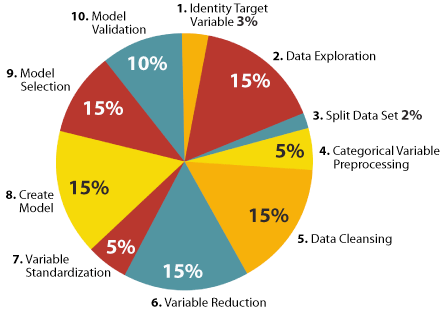SticsPredicts™ Data Models
SticsPredicts™
What Are Predictive Data Models?
Predictive models analyze past performance to assess how likely a customer is to exhibit a specific behavior in the future, in order to improve marketing effectiveness. Predictive models also encompass data models that seek out subtle patterns to predict future value, risk, and worth.
Stics predictive modeling solutions help you:

- Enhance your existing marketing
- Leverage innovative technology
- Implement quickly and easily
- Acquire a turnkey service
- Produce a FAST 10X + ROI
- Realize an ongoing ROI
Steps involved in the predictive modeling process include:
- Identify target variable: The analyst must select or, in many cases, create, the target variable–the question that is being addressed
- Data exploration: The analyst examines the data, computing and analyzing various summary statistics regarding the different variables contained in the data set.
- Split data set: The analyst may randomly split the data into two sets, one of which will be used to build or train the model and the other to test the quality of the model once it is built.
- Categorical Variable Preprocessing: Categorical variables are variables such as gender and marital status that possess no natural numerical order. These variables must be identified and handled separately from continuous numerical variables such as age and income.
- Data Cleansing: The data must be cleansed of missing values and outliers. Missing values are, quite literally, missing data.
- Variable Reduction: The variables in the data set are examined in terms of their correlation with the target variable. Those that are redundant or highly correlated with each other are removed. For example, a data set may include monthly and yearly household income; in some situations, including both could be problematic.
- Variable Standardization: The remaining variables are often re-scaled so they can be more efficiently analyzed.
- Create Model: Variables and weights yielding the best estimate of the target variable are captured to create a model, using the training data taken from the original data set.
- Model Selection: Several competing models are often considered.
- Model Validation: The model is run using the test data taken from the original data set.
In the past, the previous steps were labor intensive, requiring the expertise of one or more analysts and system programmers. Stics has automated much of this process, making it easier to put predictive analytics to work for you. With Stics, decision makers of all levels can use advanced analytics to guide their critical business decisions at a fraction of the cost and time.
We enable users with little or no statistical experience to perform statistical analysis quickly and easily. Data exploration and pre-processing, which typically takes 50 to 80% of an analysts time during the modeling process, is handled automatically by Stics, technology services. Stics can scan an entire data set and automatically:
- Distinguish between continuous numeric variables such as income and age, and categorical variables such as gender and marital status.
- Handle problem data, such as missing values and outliers.
- Partition the data into random test and train subsets, to protect against sample bias in the data.
- Examine the relationship between each potential variable and the results you need to find the most predictive variables.




